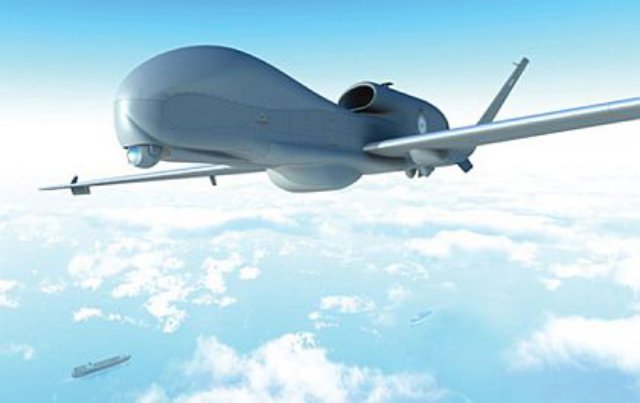The U.S. Naval Air Systems Command (Navair) is seeking information from industry on radar and antenna solutions that could provide the MQ-4C Triton unmanned aircraft with a “sense and avoid” (SAA) capability it needs to fly in unrestricted airspace with other aircraft. The Navy’s efforts to develop an SAA radar for the Triton thus far “have failed to produce a design that meets performance and manufacturing requirements to successfully implement this critical technology,” Navair stated in a request for information released on November 3.
The Navy is moving forward with flight testing and mission systems integration of the Triton, a maritime derivative of the RQ-4 Global Hawk, with the issue of an airborne collision-avoidance radar unresolved. In 2013, the service instructed prime contractor Northrop Grumman to stop work on the SAA radar subsystem then under development by subcontractor Exelis. Program officials including Capt. James Hoke, the Navy’s outgoing Triton program manager, have said that sizing an electronically scanned radar with the power and cooling required in the space available has proven difficult.
To perform its mission of maritime persistent surveillance, the Triton “will require worldwide airspace access to include the U.S. National Airspace System, international and foreign airspace,” Navair noted. It must comply with U.S. federal aviation regulations Parts 91.111 and 91.113, which require that pilots of manned aircraft maintain safe separation and remain vigilant to see and avoid other aircraft, as well as Department of Defense policy directive 4540.1, requiring that U.S. aircraft flying over international waters be equipped with an airborne radar to provide safe separation. It must also comply with International Civil Aviation Organization Annex 2, Section 3.2, setting rules for “avoidance of collisions.” The Triton will be equipped with a traffic alert and collision avoidance system (Tcas) transponder and will signal its position by automatic dependent surveillance-broadcast (ADS-B), however, these systems by themselves are not considered sufficient for unmanned aircraft collision avoidance.
In its request for information, Navair said it seeks a system that would fit within the size, weight and power constraints of the MQ-4C, but would be modular and scalable to another unmanned aircraft system. The command said it anticipates the radar may require additional data from ground-based radars when the Triton is operating in an airport terminal environment to overcome distortions from ground clutter. “A modular, scalable design, coupled with an incremental development approach is envisioned,” the command said.
Navair requested that interested companies submit white papers describing their technologies by December 18.
Source: AIN Online

